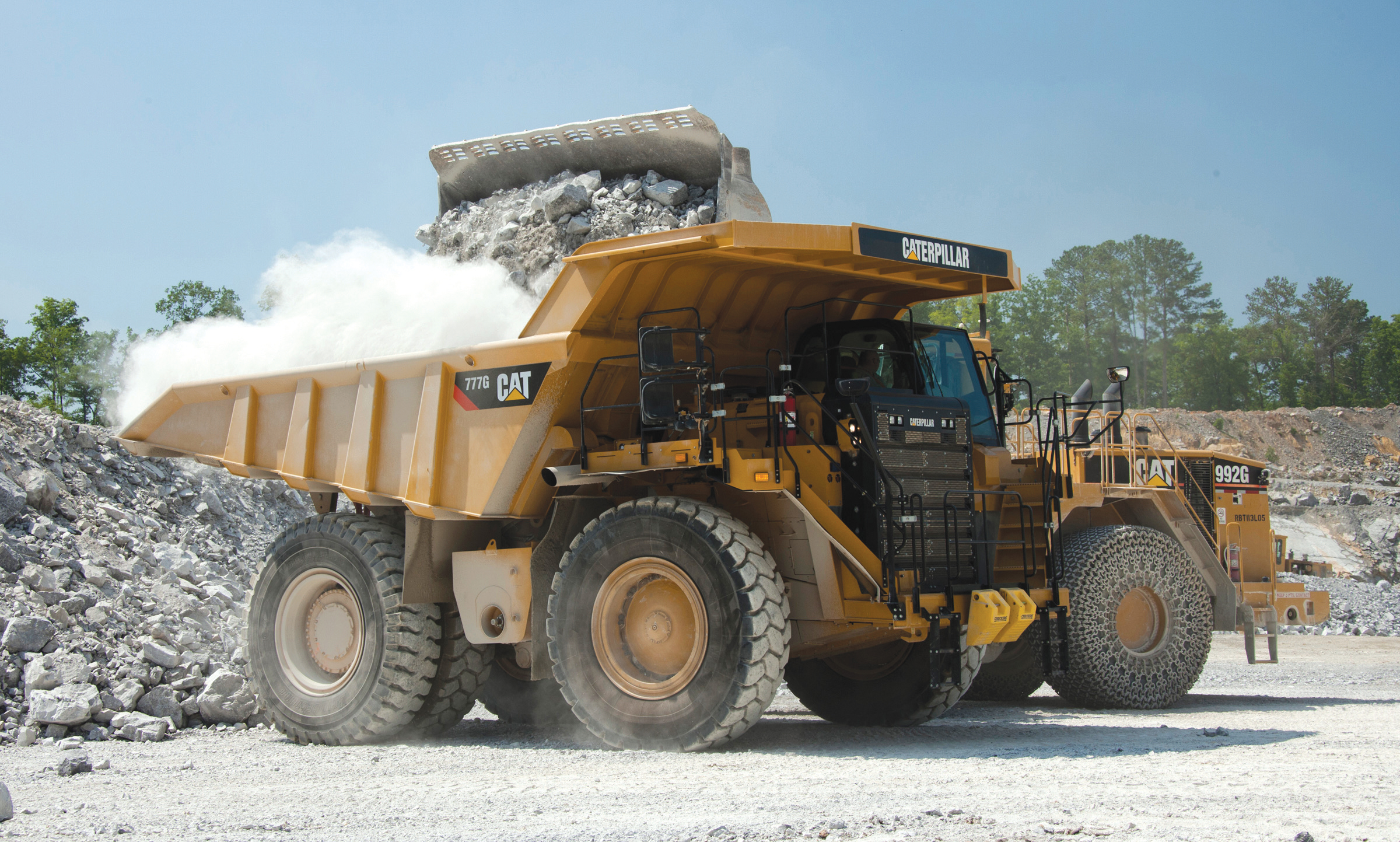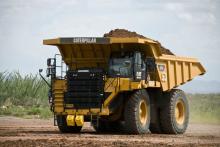
First introduced by
The latest in the line, the Cat 777G off-highway truck introduces “outstanding performance, production and fuel efficiency in the 91tonne size class,” replacing the 777F. It also offers enhanced safety, operator comfort and service convenience, says Caterpillar.
“The 777G achieves greater production with 7% more torque powering work and new transmission controls that produce quick haul cycles with automotive quality shifting.
“The production increases are balanced with new fuel saving strategies that include configurable economy settings as well as an adaptive economy mode that automatically optimises fuel consumption based on the user’s production baseline,” says the company.
“Fuel savings also are realised behind the scenes through features such as auto neutral idle and APECS (Advanced Productivity Electronic Control Strategy) transmission controls where the truck becomes more fuel efficient at idle in a forward gear and when climbing grades.
“Customers can choose to engage features like Engine Idle Shutdown and speed limiting to further improve fuel savings.”
Caterpillar is also introducing its US EPA Tier 4 Final solution on the 777G two years in advance of the effective date of the regulation, using a “simple and robust solution” that includes engine technology combined with diesel oxidation catalysts.
It requires the use of ultra-low sulphur diesel fuel and low-ash engine oil, but requires no additional maintenance or operator input. For operations outside areas regulated by the US EPA, the 777G reduces emissions with Tier 2 or EU Stage II equivalent technology and fuel efficiency.
Caterpillar has enhanced braking and traction control for the G Series with hydraulic oil-immersed disc brakes, now standard on all four corners of the truck, said to increase slope holding capability and provide fade-resistant, responsive braking performance.
“The optional Cat engine brake can extend service brake life and integrates with Automatic Retarder Control, enabling fast downhill travel and reduced cycle times. In addition to brake performance updates, the traction control system on the 777G is now able to differentiate between tyre spin and high-speed turns so it now can activate at lower speeds.”
The 777G also features new designs to enhance the safety and comfort of operators and maintenance personnel including an access system that is wider, low effort and convenient with new hand rails promoting three points of contact. Inside the cab, the operator experiences 50% less sound compared to the previous model.
Object detection is standard on the 777G, and uses a combination of radars, an in-cab display and multiple cameras, to provide equipment operators with enhanced awareness for increased site safety.
Another feature is tyre monitoring through use of payload values from the Truck Production Monitoring System and data such as air temperature and truck speed to calculate the load placed on tyres, and maintenance is said to be quick and convenient with ground level service centres for both electrical connections and fluid fill, while Caterpillar is extending its hydraulic oil filter service intervals to 1,000 hours, reducing customer life cycle costs.
New emission control strategies enable the Cat C32 engine to meet Tier 4 Final emissions regulations in the USA and Canada.
The new emission control strategy includes the Cat NOx Reduction System and two diesel oxidation catalyst canisters, one for each bank of cylinders in the V-configured Cat C32 engine. Working in combination with ACERT, the system diverts a small volume of cooled engine exhaust back to the combustion chamber, resulting in reduced cylinder temperatures and reduced NOx formation taking advantage of the cleaner, less corrosive properties of ultra-low sulphur diesel fuel and low-ash engine oils to maintain service intervals and component life. The two diesel oxidation catalyst canisters trap residual hydrocarbons in the exhaust.







